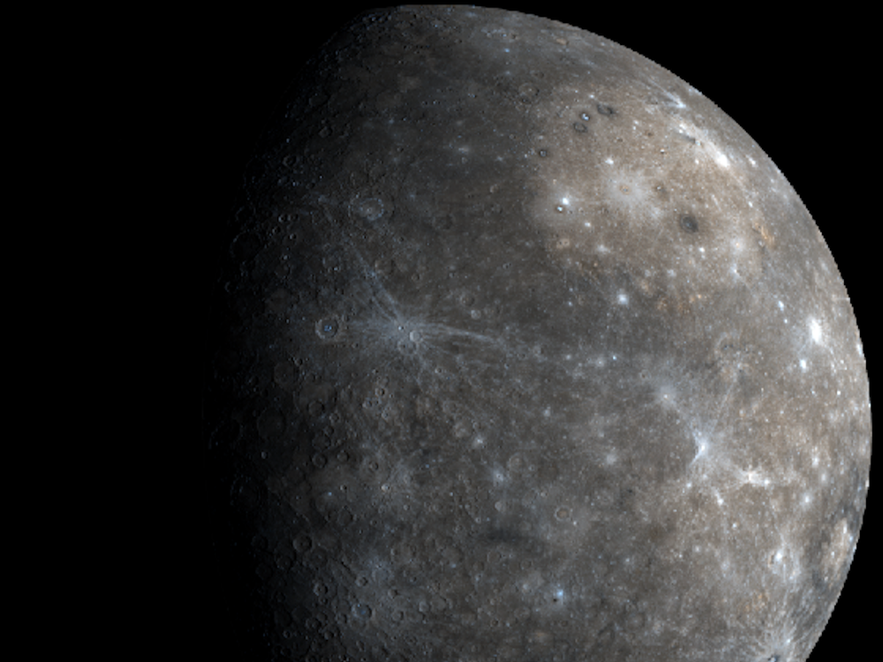
Composer // Mira Calix
Scientist // Professor David Rothery
Planet // Mercury
Check out a sneak preview of Mira Calix's new piece from our recent workshop session with the Ligeti Quartet here. Mira Calix has taken raw data from satellite missions to Mercury and turned it into music. The piece is simultaneously in 6/8 and 3/4 time signatures, representing its 3:2 orbit:spin ratio.
Mira Calix – is an award-winning artist, composer and performer. Music and sound have always been at the centre of her practice, which she continues to integrate with visual media and technological innovation to create multi-disciplinary installations and performance works. Mira has been commissioned by many leading international cultural institutions, festivals and ensembles including the London Sinfonietta, the Royal Shakespeare Company, the Aldeburgh Festival, the Melbourne Recital Centre, Performa, Institute of Contemporary Art, Garage MCA, National Portrait Gallery, the Manchester International Festival and The Mayor Of London among others. Mira Calix is signed to Warp Records and published by Mute Song/ Music Sales. http://www.miracalix.com/
Professor David Rothery is mentoring Mira Calix on Mercury. Professor of Planetary Geosciences, Open University. Runs planetary science course. Author of: Planets: A Very Short Introduction (Oxford Univ Press 2010), Teach Yourself Planets (Hodder, now out of print), Mercury: From Pale Pink Dot of Dynamic World (Springer, 2015). On the science team for the European Space Agency orbiter probe to Mercury (BepiColombo, launching Oct 2018,arrival Dec 2026). http://www.open.ac.uk/people/dar4
Top 5 Mercury facts:
1. Mercury is the closest planet to the Sun, about 36 million miles from it.
2. Mercury is the smallest planet on the Solar system, only a little larger than our Moon.
3. At Mercury’s closest approach, the sun would look 3 times larger from Mercury as it does from Earth!
4. Mercury has very long days and very short years – one day on Mercury takes 59 Earth days. One day-night cycle on Mercury takes about 176 Earth days. Mercury’s year (a full orbit around the Sun) is just 88 Earth days.
5. Mercury has an elliptical orbit and because of its long days and short years, the morning Sun appears to rise briefly, set, and rise again from parts of the planet’s surface. The same things happen in reverse at sunset, causing double sunsets.
Ref: https://solarsystem.nasa.gov/planets/mercury/overview/
Image credit: David Rothery
